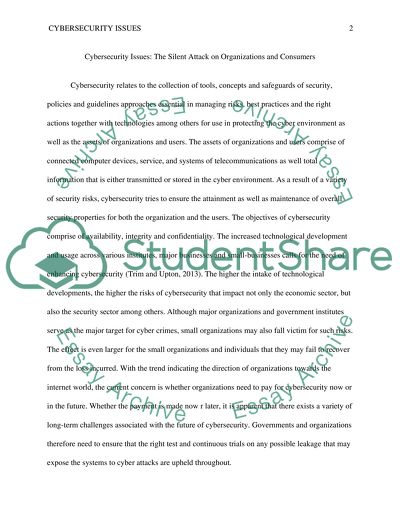Cite this document
(“Cybersecurity Issues: The Silent Attack on Organizations and Consumers Essay”, n.d.)
Cybersecurity Issues: The Silent Attack on Organizations and Consumers Essay. Retrieved from https://studentshare.org/information-technology/1698202-cybersecurity-issues-the-silent-attack-on-organizations-and-consumers
Cybersecurity Issues: The Silent Attack on Organizations and Consumers Essay. Retrieved from https://studentshare.org/information-technology/1698202-cybersecurity-issues-the-silent-attack-on-organizations-and-consumers
(Cybersecurity Issues: The Silent Attack on Organizations and Consumers Essay)
Cybersecurity Issues: The Silent Attack on Organizations and Consumers Essay. https://studentshare.org/information-technology/1698202-cybersecurity-issues-the-silent-attack-on-organizations-and-consumers.
Cybersecurity Issues: The Silent Attack on Organizations and Consumers Essay. https://studentshare.org/information-technology/1698202-cybersecurity-issues-the-silent-attack-on-organizations-and-consumers.
“Cybersecurity Issues: The Silent Attack on Organizations and Consumers Essay”, n.d. https://studentshare.org/information-technology/1698202-cybersecurity-issues-the-silent-attack-on-organizations-and-consumers.


